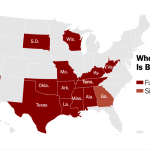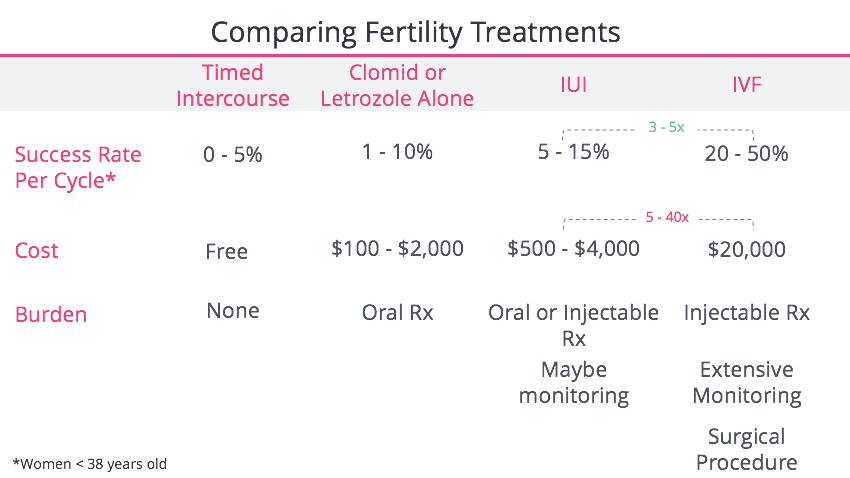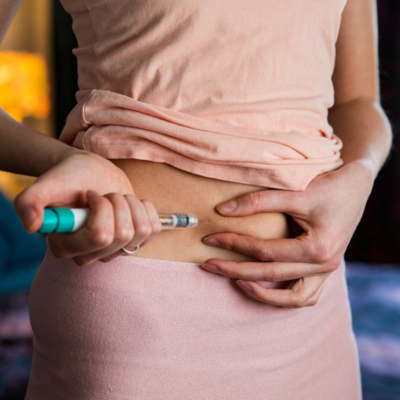
How Much Is Reciprocal IVF? Your Complete Guide to Costs, Process, and What to Expect
April 29, 2025
Is IVF Illegal in Some States? Your Guide to Understanding the Facts
April 29, 2025How Much Does One Round of IVF Cost? Your Complete Guide to Understanding the Price Tag
In vitro fertilization (IVF) is a life-changing option for many hoping to build a family, but the cost can feel like a big question mark. If you’re wondering how much one round of IVF really costs, you’re not alone—it’s one of the first things people ask when they start this journey. The truth is, the price varies widely depending on where you live, what your specific needs are, and even how many tries it takes. In this guide, we’ll break it all down so you can get a clear picture of what to expect, plus some insider tips to make it more manageable.
By the end of this article, you’ll have a solid grasp of IVF costs in 2025, including hidden fees, ways to save, and the latest trends shaping prices. Whether you’re just curious or ready to take the plunge, let’s dive into the numbers and beyond.
What’s the Average Cost of One IVF Cycle in 2025?
One round of IVF—known as a “cycle”—typically costs between $12,000 and $25,000 in the United States as of 2025. That’s the base price for the essentials: monitoring your progress, retrieving eggs, fertilizing them in a lab, and transferring an embryo. But here’s the catch: this range is just a starting point. Depending on your situation, the final bill could climb higher.
For example, the American Society for Reproductive Medicine pegs the average at around $12,400 for a basic cycle, but that’s from older data. Newer estimates, adjusted for inflation and rising medical costs, show $17,000 to $25,000 is more realistic today. Why the jump? Clinics are using advanced tech, and demand for fertility treatments is up, pushing prices along with it.
- Big City vs. Small Town: In places like San Francisco or New York, you might pay closer to $24,000 due to higher living costs and clinic overhead. In smaller towns, it could dip to $15,000 or less.
- What’s Included: Most base fees cover ultrasounds, blood tests, egg retrieval, lab work, and the embryo transfer. But extras—like medications or genetic testing—aren’t always part of the package.
Want a quick gut check? Call a few clinics near_you and ask for their base IVF cycle cost. You’ll see the range in action.
Breaking Down the Pieces: What Makes Up the IVF Price?
IVF isn’t just one procedure—it’s a series of steps, and each one adds to the total. Understanding these pieces can help you spot where costs might creep up. Here’s how it typically breaks down:
Monitoring and Testing
Before anything happens, doctors track your hormone levels and egg development with ultrasounds and blood work. This usually costs $1,000 to $2,000 and is part of the base fee at most clinics. It’s like the prep work before the main event—essential but not flashy.
Medications
Fertility drugs are a big chunk of the bill, ranging from $3,000 to $6,000 per cycle. These meds stimulate your ovaries to produce multiple eggs, and the price depends on your dosage and how long you need them. Some people respond quickly, while others need more time (and more meds).
- Tip: Ask your doctor about “mini-IVF,” which uses lower doses of drugs. It’s cheaper—around $5,000 total for a cycle—but success rates can be lower, so it’s a trade-off.
Egg Retrieval
This outpatient surgery, done under anesthesia, costs $2,000 to $5,000. It’s where they collect your eggs, and the price includes the procedure plus the anesthesiologist’s fee. Fun fact: it takes about 20 minutes, but it’s a key moment in the process.
Lab Work and Fertilization
In the lab, eggs meet sperm—either naturally or with a boost called ICSI (intracytoplasmic sperm injection), where a single sperm is injected into an egg. Basic lab fees are $1,500 to $3,000, but ICSI adds $1,000 to $2,000 if you need it (like if sperm quality is low).
Embryo Transfer
Placing the embryo in your uterus is simpler than retrieval, costing $1,000 to $2,000. It’s usually included in the base fee, but if you’re using frozen embryos later, that’s an extra $3,000 to $6,000 per transfer.
Here’s a quick table to see it all at once:
| Step | Cost Range | What’s Covered |
|---|---|---|
| Monitoring | $1,000 – $2,000 | Ultrasounds, blood tests |
| Medications | $3,000 – $6,000 | Fertility drugs |
| Egg Retrieval | $2,000 – $5,000 | Surgery and anesthesia |
| Lab Work | $1,500 – $3,000 | Fertilization (add $1K-$2K for ICSI) |
| Embryo Transfer | $1,000 – $2,000 | Placing embryo in uterus |
Add these up, and you’re in that $12,000 to $25,000 ballpark. But don’t stop here—there’s more to the story.
Hidden Costs You Might Not Expect
The base price is just the beginning. Plenty of extras can sneak into your IVF bill, and they’re often overlooked until the invoice arrives. Let’s shine a light on these:
Embryo Freezing and Storage
If you have extra embryos, freezing them for later costs $1,000 to $2,000 upfront, plus $300 to $600 per year for storage. It’s a smart move if you want more kids down the road, but it’s not cheap.
Genetic Testing
Preimplantation genetic testing (PGT) checks embryos for issues like Down syndrome. It’s $3,000 to $6,000 per cycle, plus lab fees, and about 35% of U.S. patients use it. It’s optional but can boost success rates by picking the healthiest embryos.
Donor Eggs or Sperm
If you need donor eggs, add $10,000 to $15,000 per cycle. Donor sperm is cheaper, around $500 to $1,000. These costs cover the donor’s fees, meds, and sometimes travel.
Travel and Time Off
Live far from your clinic? Gas, flights, or hotel stays can pile up—think $500 to $2,000 if you’re crossing state lines. Plus, time off work might mean lost wages, especially for multiple appointments.
- Real Talk: One couple I heard about spent $1,800 on travel for a clinic 300 miles away because it had better success rates. Worth it? They thought so after their baby arrived.
These extras can push your total well past $30,000 if you’re not careful. So, how do you keep it under control?
How Many Cycles Will You Need? The Real Cost Multiplier
Here’s a tough truth: one round of IVF doesn’t always work. Success rates hover around 40% per cycle for women under 35, dropping as age climbs. The average patient needs 2 to 3 cycles to get pregnant, meaning your total cost could double or triple.
- Under 35: $17,000 – $25,000 for one cycle, $34,000 – $75,000 for 2-3.
- Over 40: Success drops to 10-15% per cycle, so you might spend $50,000+ chasing that dream.
A 2024 study from Fertility and Sterility found that 60% of patients need multiple cycles, and costs per successful birth average $61,000. That’s not per cycle—that’s per baby. Planning for this upfront can save you from sticker shock later.
Quick Quiz: How Many Cycles Might You Need?
Answer these to get a rough idea:
- Are you under 35? (Yes = 1 point, No = 0)
- Do you have a known fertility issue (like blocked tubes)? (Yes = 0, No = 1)
- Is your partner’s sperm count normal? (Yes = 1, No = 0)
- 2-3 points: You might need 1-2 cycles.
- 0-1 point: Plan for 2-3, maybe more.
It’s not exact, but it’s a starting point. Talk to your doctor for a personalized take.
Insurance and IVF: Will It Help?
Insurance is a wild card. Only 19 states mandate some fertility coverage, and even then, IVF isn’t always included. If you’re lucky, your plan might cover monitoring or meds—about 30% of patients get partial help. But most pay out of pocket.
- Good News: States like New Jersey and California often cover more, with averages of $5,000-$10,000 reimbursed per cycle.
- Bad News: Self-insured employers (big companies that fund their own plans) can opt out, leaving you high and dry.
Check your policy—look for “infertility treatment” or “ART” (assisted reproductive technology). Call your HR rep if it’s unclear. And if you’ve got no coverage? There are still ways to make it work.
Creative Ways to Cut IVF Costs
IVF’s pricey, but you’re not powerless. People get creative to bring the bill down, and some of these might surprise you. Here’s what’s trending in 2025:
Fertility Financing
Loans and payment plans are booming. Companies like Future Family offer 0% APR plans, letting you pay $300-$500 monthly instead of $20,000 upfront. Clinics often partner with lenders—ask about it.
Multi-Cycle Discounts
Some clinics sell packages: $25,000 for 2 cycles or $35,000 for 3. It’s a gamble, but if you need multiple tries, it beats paying full price each time. Look for “shared risk” programs—if you don’t get pregnant, you get a partial refund.
Traveling for Treatment
IVF tourism is on the rise. A cycle in Mexico costs $6,000-$10,000, and Europe’s even cheaper—think $5,000 in Spain. Add travel, and it’s still half the U.S. price. X posts in 2025 show couples saving $10,000+ this way.
- Pro Tip: Research clinic success rates abroad. Cheap doesn’t mean good.
Mini-IVF or Natural IVF
Mini-IVF uses less medication, dropping costs to $5,000-$7,000. Natural IVF skips drugs entirely, hitting $3,000-$5,000. Success rates are lower (20-25%), but it’s a budget-friendly first step.
Grants and Crowdfunding
Nonprofits like Baby Quest offer $5,000-$15,000 grants. Crowdfunding on GoFundMe is also huge—families raise $10,000 on average. Share your story; people love to help.
The Emotional Cost: Beyond the Dollars
Money’s one thing, but IVF’s emotional toll is real. The ups and downs—hope, disappointment, waiting—hit hard. A 2024 Stanford study found women who don’t conceive after IVF are 48% more likely to need mental health support. Budgeting for therapy ($100-$200/session) or a support group (often free) can be as crucial as the medical costs.
- One Mom’s Story: Sarah, 38, spent $45,000 over 3 cycles. “The money stung, but the waiting nearly broke me. Finding a friend who’d been through it kept me sane.”
Plan for this. It’s not just about your wallet—it’s about your heart.
IVF Costs Around the World: A Global Snapshot
Curious how the U.S. stacks up? IVF prices vary wildly globally, and it’s eye-opening:
- Canada: $10,000-$15,000, with some provinces covering one cycle.
- UK: £3,000-£5,000 ($4,000-$6,500), often free via NHS if you qualify.
- India: $2,000-$4,000, a hotspot for medical tourism.
- Australia: $8,000-$12,000, with Medicare rebates up to $6,000.
Why so cheap elsewhere? Lower labor costs, government subsidies, and less reliance on pricey tech. It’s why some Americans hop borders—savings can outweigh travel hassles.
What’s New in 2025: Trends Shaping IVF Costs
IVF’s evolving, and 2025 brings fresh twists that affect your bill:
AI in Embryo Selection
Clinics are using AI to pick the best embryos, cutting failed transfers. It’s $500-$1,000 extra, but a 2024 study showed a 15% bump in success rates. Worth it? Maybe if it saves you a cycle.
At-Home Monitoring
Portable ultrasound kits let you skip some clinic visits, saving $200-$500. They’re new, but early adopters on X rave about the convenience.
Price Transparency Push
Patients are demanding clear pricing—think itemized bills upfront. Clinics responding to this trend might offer flat-rate packages, locking in costs at $18,000-$20,000 with no surprises.
Your IVF Budget: A Step-by-Step Plan
Ready to crunch numbers? Here’s how to build a realistic IVF budget:
- Get a Quote: Call 2-3 clinics for their base cycle cost. Ask what’s included.
- Add Meds: Estimate $4,000 unless your doctor says otherwise.
- Factor in Extras: Need ICSI? PGT? Donor eggs? Tack on $1,000-$15,000.
- Plan for Multiples: Budget for 2 cycles—$34,000-$50,000—to be safe.
- Check Insurance: See if any piece (like testing) is covered.
- Explore Savings: Look into financing, grants, or travel options.
Example: Base cycle ($20,000) + meds ($4,000) + PGT ($4,000) = $28,000 for one try. Double it for two: $56,000. Adjust from there.
Poll: What’s Your Biggest IVF Cost Worry?
Vote below—it takes 10 seconds and helps us tailor future tips!
- A) The base cycle price
- B) Medication costs
- C) Hidden fees like storage
- D) Needing multiple cycles0 cycles
Your pick shapes what we dive into next!
3 Things You Haven’t Heard About IVF Costs
Most articles stick to the basics, but here are three angles you won’t find everywhere:
The Cost of Success vs. Failure
A 2023 study calculated the cost per live birth, not just per cycle. For women under 35, it’s $50,000-$60,000 total. Over 40? It jumps to $160,000-$200,000 because success rates tank. Clinics don’t advertise this—it’s the real number to plan for.
Micro-IVF’s Rise
This lesser-known option uses tiny drug doses, slashing costs to $3,000-$5,000. It’s perfect for younger women with no major issues, but it’s under-discussed. Success is 20-25%, vs. 40% for standard IVF, yet it’s a game-changer for budget-conscious folks.
The Tax Trick
IVF expenses can be tax-deductible as medical costs if they exceed 7.5% of your income. Few talk about this, but it could save you $2,000-$5,000. Chat with a tax pro—it’s a hidden gem.
Wrapping It Up: Your IVF Cost Roadmap
One round of IVF isn’t a single number—it’s a range, a puzzle, and a journey. You’re looking at $17,000 to $25,000 for the basics, but with meds, extras, and maybe a second try, it could hit $50,000 or more. The good news? You’ve got options: financing, travel, mini-IVF, or even a tax break. The key is knowing what’s coming and planning smart.
Think of it like a road trip. You’ve got the map—now pick your route. Talk to clinics, crunch your numbers, and lean on support, whether it’s a friend or a counselor. IVF’s a big step, but with the right prep, you can make it work for your wallet and your dreams.
Have a question or a story to share? Drop it below—I’d love to hear where you’re at on this ride!




